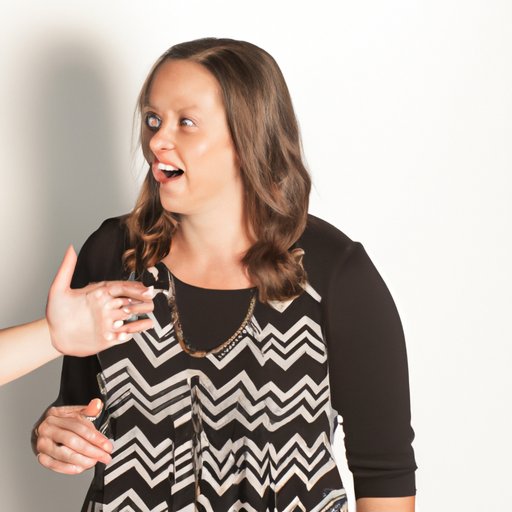
I. Introduction
Have you ever found yourself wondering if someone is lying to you? The ability to spot deception can be helpful in many different situations, from job interviews to personal relationships. Being able to tell if someone is lying is not an exact science, but there are several cues that can indicate deception. This article will outline the physical, verbal, behavioral, and body language cues of liars, as well as the use of humor, inconsistencies, and triangulation. Armed with this information, you’ll be better equipped to determine when someone is not telling the truth.
II. Physical Cues
Physical cues refer to the observable gestures, movements, and behaviors of a liar. When someone is lying, they may avoid eye contact, fidget, or touch their face or mouth repeatedly. These actions can indicate a nervous or uncomfortable state, suggesting deception. For example, when a friend asks if they broke your vase while staring at their feet, it’s likely that they’re lying.
III. Verbal Cues
Verbal cues refer to the speech patterns and language of a liar. When someone is lying, they may hesitate or stutter, use convoluted language, or provide too much or too little information. These cues suggest that the liar is attempting to cover up something or distort the truth. For example, when asked if they ate the last cookie, a child who responds with “I don’t know what you’re talking about” is likely lying.
IV. Changes in Behavior
Changes in behavior are an important cue to look out for when detecting lies. When someone is lying, they may withdraw from social interactions, avoid certain situations or tasks, or become more confrontational or defensive. These cues suggest that the liar is attempting to protect their deception and avoid revealing the truth. For example, when a coworker becomes more defensive and argumentative after a difficult project, they may be lying about their role in the project’s failure.
V. Use of Humor
Liars may use humor as a way to deflect attention away from their lies. When lying, they may make jokes or be overly cooperative to change the subject or distract from the deception. These cues suggest that the liar is trying to maintain control of the conversation and avoid detection. For example, when a politician is asked about a controversial topic and responds with a humorous anecdote, they may be lying about their position on the issue.
VI. Body Language
Body language refers to the non-verbal actions and signals of a liar. When someone is lying, they may adopt a closed body stance, cross their arms, or lean away from the person they’re lying to. These cues suggest that the liar is attempting to create a barrier between themselves and the person they’re lying to, or signal their discomfort with the conversation. For example, when a partner denies cheating and sits far away on the couch with their arms crossed, they may be lying.
VII. Inconsistencies
Inconsistencies are one of the most significant cues of lying. When someone is lying, they may change their story, talk about things not related to the question, or provide conflicting details. These cues suggest that the liar is trying to keep their deception organized, or that they don’t remember what they previously told you. For example, when an employee provides contradicting information about their experience during an interview, they may be lying about their qualifications.
VIII. Triangulation
Triangulation refers to the use of a third party to corroborate a false story. When someone is lying, they may bring in another person to support their deception, reinforcing the lie in the mind of the listener. This strategy is often used by narcissists or manipulative individuals who want to manipulate others to believe their story. For example, when a salesperson brings in a fake customer to support their product’s effectiveness, they may be lying about its quality.
IX. Conclusion
Identifying lies is no easy task, but it’s an essential skill to have in both personal and professional life. Through understanding physical, verbal, behavioral, body language, inconsistencies, and triangulation, you’ll be better able to detect falsehoods. Remember to combine different cues, look for patterns, and trust your gut instincts.




